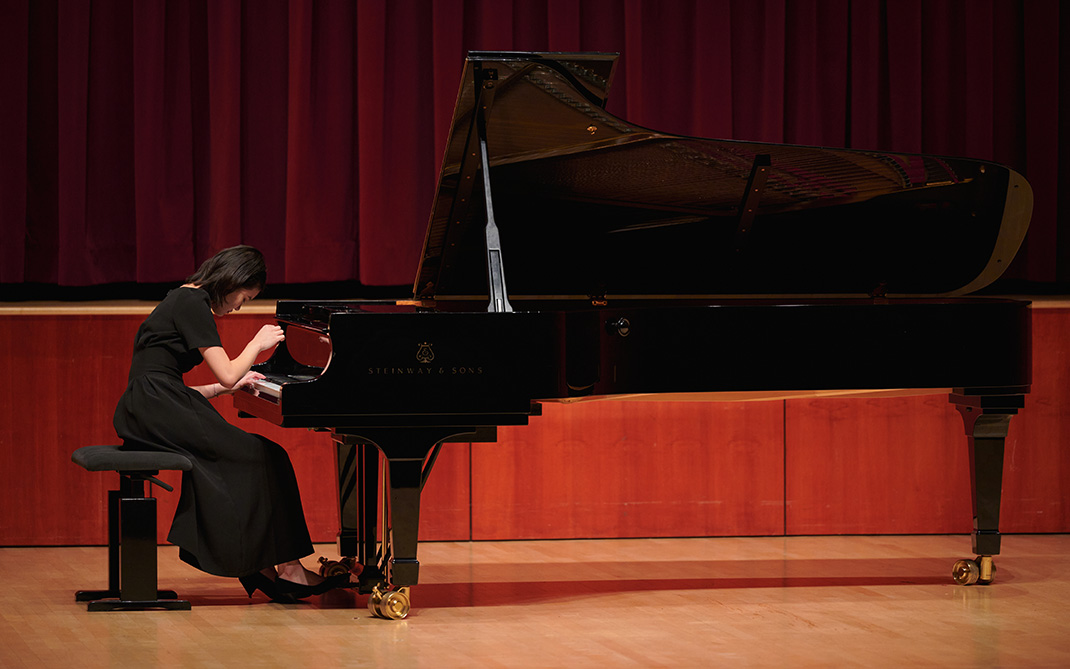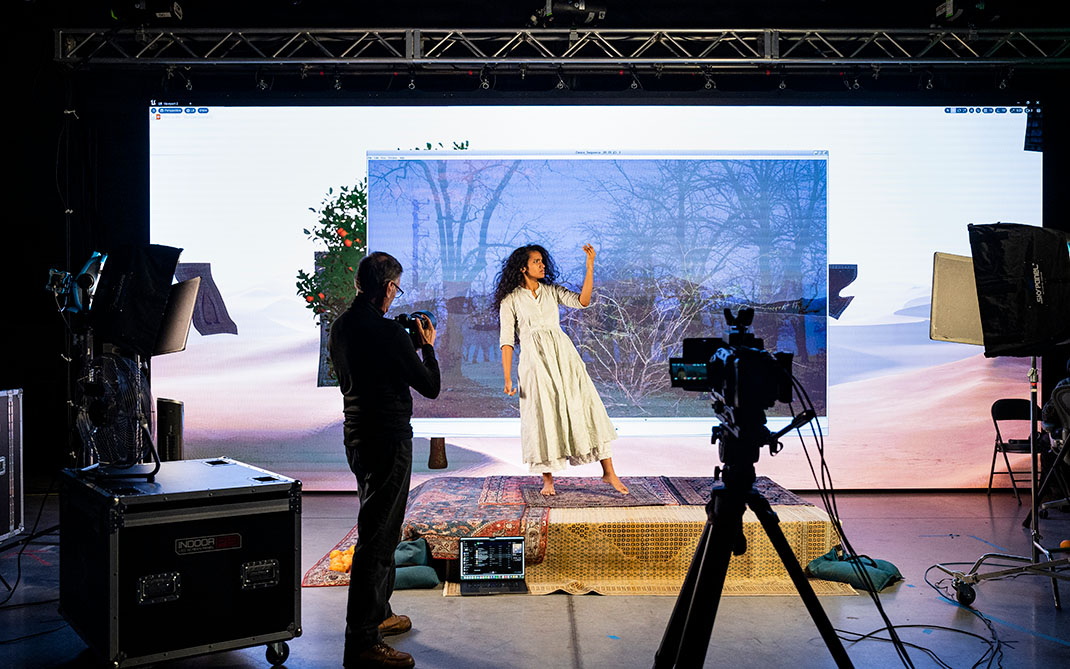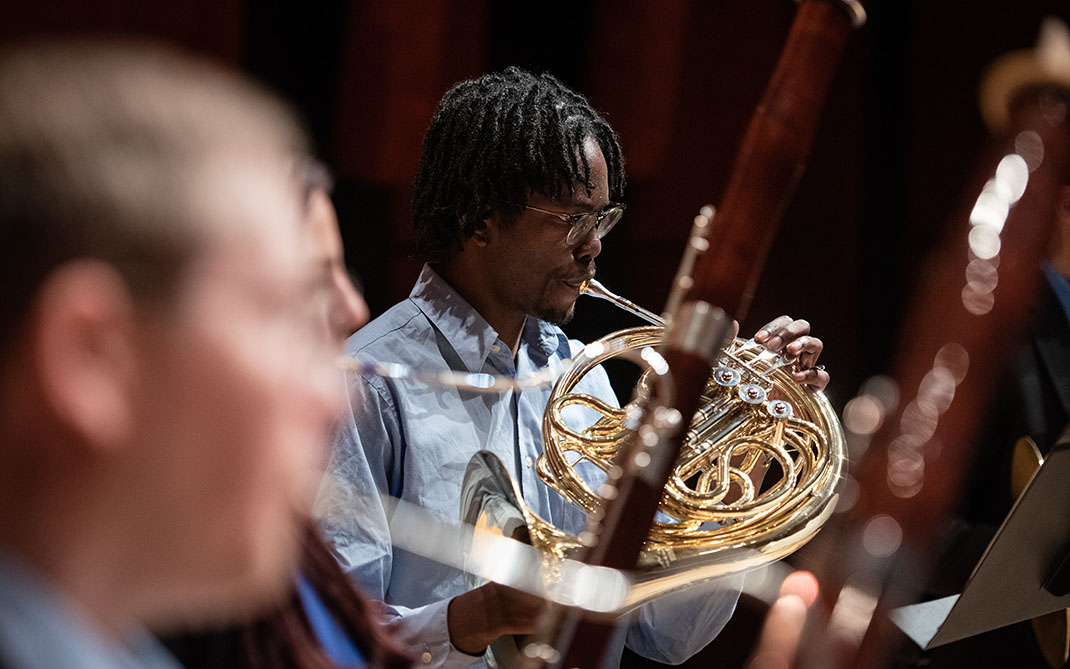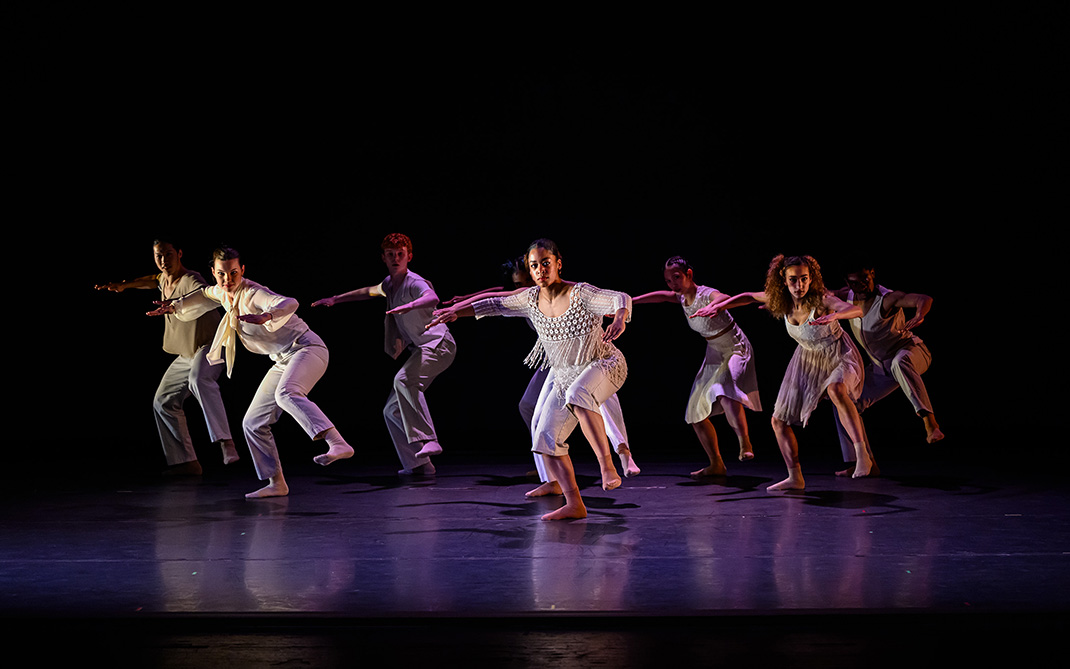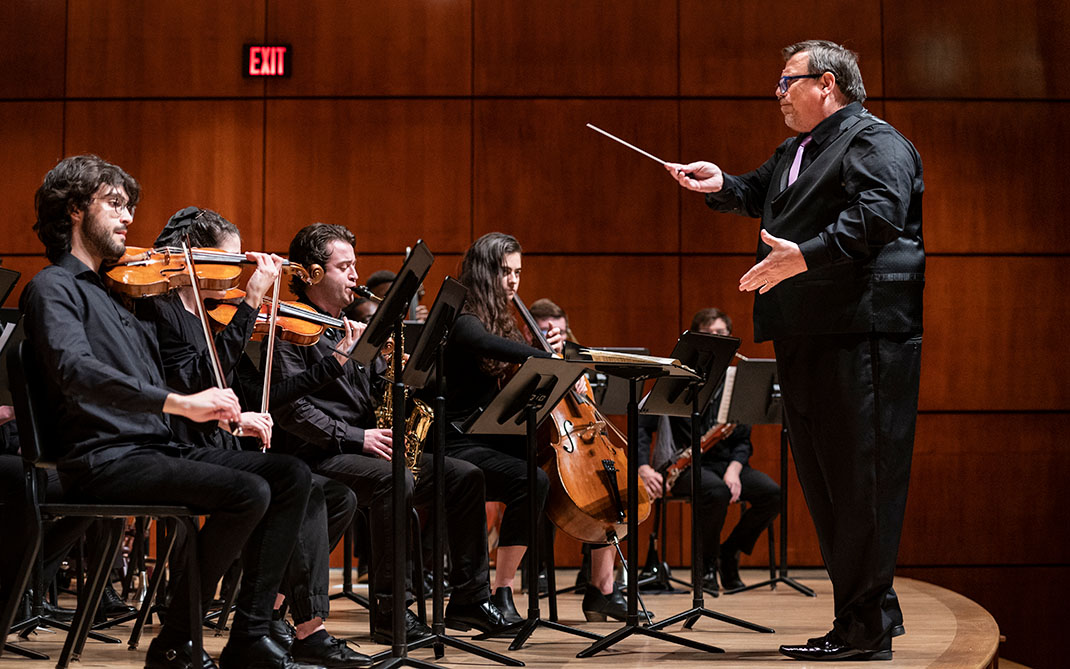Innovation Superheroes
Good morning. If you’ve lived in Winston-Salem for at least a year or two, you’re no doubt familiar by now with the slogan “City of Arts and Innovation.” Our city council formally adopted the phrase as Winston-Salem’s tagline in 2016, but it originated much earlier, I’m told, with our local arts council. It’s a fitting title for the big-small Southern town that founded the nation’s first arts council in 1949, and followed that up in the mid 1960s by raising nearly one million dollars in a two-day phonathon to establish the North Carolina School of the Arts; and for the town where, over the last decade, downtown’s long-abandoned tobacco manufacturing empire has gradually and brilliantly rebranded and transformed itself into a world-renowned innovation district.
Now, it would be natural to assume the “Arts” in “Arts and Innovation” refers to UNCSA and other local arts organizations; and that “Innovation” belongs to Wake Forest, the city’s medical sector, and our colleagues at Forsyth Tech, Salem College, and Winston-Salem State. Most people equate innovation with technology, and by extension with the work of doctors, scientists, engineers, and researchers—but artists? Not so much. That’s why STEM programs (the acronym for science, technology, engineering, and math) get all the attention and funding, and why our political system continues to undervalue the arts and arts education. There’s an unspoken, deep-seated assumption that teaching dance, music, or other creative disciplines doesn’t drive innovation, or provide the same return on investment. And it doesn’t, if you narrowly define success in short-term workforce metrics, or if you consider of the arts an unaffordable nicety for aging audiences. No matter how many times I say it, or how passionately my peers address it, there’s still widespread obliviousness of the arts as a thriving, global economic sector that abounds with opportunity. So I’ll say it again, and again: Arts and entertainment is a $700 billion industry. That’s a larger segment of our economy than transportation and agriculture. I know I’m preaching to the choir here, but beyond our campus, and just outside our circles of arts supporters, hardly anyone thinks about the mechanics and intricacies of staging a live performance, or the army of technicians behind any successful filmmaker or producer, or how animatronics bring magic kingdoms to life in theme parks across the globe, or how all that and more brings joy to the hearts of millions of ticket-buying, movie-going, cable-watching, music-loving, entertainment-seeking audiences and consumers in every country on this earth.
That’s why I’ll never cede the attribute of “innovation” to STEM disciplines. Continuous innovation has defined and advanced the arts over the course of centuries, and it will profoundly impact the UNCSA curriculum, drive our strategic priorities, and upend the world’s creative industries in the years ahead. To be clear: by innovation, I mean not only technological breakthroughs, but also original interpretations, enhanced techniques, emerging platforms, and groundbreaking masterworks. UNCSA must become better positioned to lead in all the above. To do so will not lead us astray from our traditional conservatory pedagogies, nor will it conflict with our classical expressions of art and beauty—it will build on them. To prepare our students for the accelerated pace of change not only in the creative industries, but in every industry, we must embrace and lead disruption, or to repeat a common mantra in this age of digital revolution: we must innovate or die.
It’s so vital to our mission that we made innovation one of five pillars of our capital campaign. Unlike our other pillars—student scholarships, faculty support, campus facilities, and community engagement—the concept of innovation in the context of an arts conservatory requires a bit of explanation.
If we were to make an animated feature to illustrate the momentum of Arts and Innovation on our campus, I’d portray our deans and faculty as the story’s superheroes. It’s not an exaggeration to say they have superpowers when it comes to creativity: they know the emerging trends of their industries, and know better than anyone what’s coming next and what skills our students will need to succeed and persevere through the ups and downs of a flourishing but wildly unpredictable gig economy. I’m proud to say that UNCSA lives up to its own version of the Winston-Salem tagline: the Campus of Arts and Innovation. To elaborate, I’d like to share examples of leading-edge initiatives from each of our schools.
I’ll start with the School of Drama, led by our newest dean, Scott Zigler. I hope no one minds me saying it, but Scott took on a nearly impossible challenge: build on the legacy and success of the school’s classical actor training by aligning the curriculum with the new realities of the 21st century. In addition to fostering entrepreneurship and expanding on-camera acting, Scott and his faculty are exploring alternative approaches to educating actors by creating an emphasis on what’s known in industry-speak as devised theater. For those of you not familiar with the term, it’s a highly collaborative and improvisational method of theater-making—sometimes called collective creation. It’s theater that begins without a script, which gets written in the rehearsal process by the actors, directors, designers, and others involved in the production. There’s no doubt that devising has become a sensational trend in theater—think of it as theater making for the social media age.
If this still doesn’t make sense, you may have heard the buzz about “Sleep No More,” the acclaimed off-Broadway immersive thriller based on Shakespeare’s “MacBeth.” Or maybe you’ve seen or read about the most often-produced work of devised theater, “The Laramie Project,” a play about the hate crime murder of Matthew Shepard.
To develop the new devised curriculum in the School of Drama, Scott recruited none other than Emmy-nominated actor Andy Paris to join our faculty. Andy is co-creator of “The Laramie Project” and a founding member of the show’s producer, Tectonic Theater Project, an award-winning company dedicated to developing innovative works, and whose plays have been performed around the world.
Ok, so if you’re aren’t following me yet, you have only to wait until Spring, when UNCSA will present faculty member and alumna Mollye Maxner’s award-winning “Still Life With Rocket.” It opens April 4, 2019, and it’ll be unlike anything you’ve ever seen at UNCSA. Winner of the 2018 Helen Hayes Awards for Outstanding Production and Outstanding Choreography, it’s the story of a family dealing with their mother’s worsening dementia.
Mollye is directing third-year actors in this second iteration of her play, and she reports the students are at once terrified and very excited.
Drama’s expansion into devised theater will be echoed in our School of Design and Production. Our next innovation superhero, Dean Michael Kelley, says devising will enable designers to become better storytellers, because they’ll be working more directly with actors throughout the process. The intensive collaboration provides literal on-the-job experience in a classroom setting, and supercharges critical skills any CEO would value: communication, problem-solving, and teamwork.
D&P is also moving forward with the Institute for Performance Innovation, which I announced almost exactly two years ago. The IPI will house D&P’s animatronics program, which is a perfect marriage of art and innovation. It touches just about every department in D&P, including stage properties, wig and makeup prosthetics, stage automation, and robotics. D&P is training the next generation of artists for leadership roles in the fields of Creature and Animatronic Design, Sound Design, Sound Engineering, and Mechanical Engineering for the entertainment industry and beyond. What are animatronic creatures, some of you may be wondering? Dinosaurs in Jurassic Park (enough said).
Although you won’t see dinosaurs roaming the UNCSA campus, you can see smaller creatures in our studios. You also might see a drone or two flying around. That’s because Dean Kelley and his faculty are exploring the use of drone technology in entertainment. Cirque du Soleil, where we have over 80 alumni working behind the scenes, was one of the first to use drones in a show about a turn-of-the-century lampmaker whose shades come to life in a beautifully and whimsically choreographed flight above the stage. Drones have been used for dramatic special effects at shows like halftime at the Superbowl, stadium concerts, and Olympic ceremonies. This year the Rockettes are using drones in their iconic holiday spectacular at Radio City Music Hall. But the entertainment industry hasn’t begun to realize their full potential, and UNCSA is pioneering a curriculum that supports drone technology and design for both outdoor and traditional theatrical venues.
For example, our students will be able to design completely green fireworks displays, with no explosives, no debris, no noise—just the use of drones that light up. And they’ll design and engineer the use of drones in stage shows, filling the negative space around dancers and actors with drones, dramatically impacting the way we tell stories on stage.
As you might imagine, both animatronics and drones have applications way beyond entertainment, including medicine and national security. I can’t be too specific about this, but a government agency recently visited campus to meet with Michael and his faculty, and they’re actively recruiting our students for help in building tester models and simulators. And I’m sorry to say I’ll have to leave it at that.
I’m also excited to announce that Dean Kelley is currently working with our Dean of Dance, Susan Jaffe, to design a performance using drones for UNCSA’s Winter Dance 2020. I can’t wait to see the collaboration between these two creative innovators!
Dean Jaffe is our next innovation superhero. At the Stevens Center last April, I was seated next to the distinguished dance historian Elizabeth Kendall for the debut of “Carmina Terra,” a breathtaking piece choreographed by Dean Jaffe. At intermission, Elizabeth—a New Yorker who has visited our campus several times—leaned over and implored me: “you need to find Susan more time to do choreography. There’s no one in New York doing anything like this.” I don’t know the modern dance scene like Elizabeth Kendall does, but I’d have to agree that Susan’s recent premiers at the Stevens Center, “Metallurgy” in 2015 and “Carmina Terra” last year, blew the audiences away and have certainly inspired our young dancers and choreographers.
Besides creating her own new works, Susan has passionately supported the incubation of inventive works by others. In 2017 she launched our Choreographic Institute, which fosters new work by emerging and established choreographers who show exceptional promise. Each summer, the School of Dance hosts four choreographic development residents—two in classical ballet and two in contemporary dance—who have access to our studios, dancers in our summer intensives, and mentorship by our acclaimed Visiting Distinguished Artist Helen Pickett.
This is a transformational opportunity for up-and-coming dance makers. One of our first residents, alumna Mari Meade, recently completed a two-week residency with the prestigious New York Choreographic Institute, and has joined our summer dance faculty as associate director of our Choreographic Institute. She’s also a new member of the Board of Advisors for the Thomas S. Kenan Institute for the Arts at UNCSA. Another top-notch recruit!
This summer, the Choreographic Institute will introduce Helen Pickett’s Choreographic Essentials workshop designed to develop, cultivate, and expand the compositional, choreographic, and performance skill-sets of the participants. Drawn from Helen’s extensive experience, the workshop reinforces the creative process, risk-taking, artistic autonomy, and professional development of aspiring choreographers ages 18 through 27.
Our Choreographic Institute has become a cutting-edge creative laboratory within the School of Dance, led by one of the world’s most iconic dancers and beloved deans. The program delivers on our strategic goal to innovate new works and introduces our dancers to diverse perspectives from across the globe.
Moving now from stage to screen, our next innovation superhero is Susan Ruskin, who very early on foresaw a seismic shift in the future of storytelling through the power of immersive media. Under her leadership, our School of Filmmaking has become a highly regarded pioneer in progressive platforms, including virtual and augmented reality, which is widely known as AR/VR. UNCSA’s newly launched Media and Emerging Technologies Lab, or METL, is the result of her bold vision.
Those of you old enough to remember a world without smartphones should have a sense of how dramatically AR/VR will change the way we live and work, and how much investment that could attract to our school, Winston-Salem, and the state. Multinational financial giant Goldman Sachs estimates that by 2025, revenues for AR/VR industries could reach $180 billion, driven by hardware, games, branding, narrative storytelling, and commerce. Companies like Facebook, Google, and Microsoft have joined venture capitalists around the world in pouring billions of dollars into developing these technologies.
We’ve already begun joint projects and classes with the Kenan-Flagler Business School and computer scientists at UNC-Chapel Hill, entrepreneurs at Wake Forest University, and engineers at North Carolina State University. There’s also a cross-disciplinary, post-graduate certificate program in the works, focused on immersive media and entertainment technology. METL will connect our faculty expertise, the passion and ingenuity of our students, and our existing production pipeline and stage space with professionals from across the state and around the country to create a real-time tech incubator in our own backyard. These projects and partnerships will enable our students to graduate with hands-on experience and creative agility, as they do in every discipline at UNCSA. Better still, instead of exporting all that next-gen talent to places like Los Angeles or New York, METL can accelerate local production of immersive content for national distribution in a variety of AR/VR platforms.
METL, headed by Ryan Schmaltz, who recently moved here from the San Francisco Bay Area, recently hosted the inaugural Future of Reality Summit, drawing together executives, practitioners, researchers, educators and thought leaders to explore immersive storytelling strategies and audience engagement via emerging technologies.
The two-day event hosted speakers and attendees from Oculus, VR Studios, IBM Academy of Technology, Unity Technologies Lab, D-Box Technologies, iNK Stories, Paramount Pictures, Tribeca Film Institute, Lowe’s Innovation Labs among many, many others. It was exhilarating to have them all here on our campus, and it helped to establish UNCSA as a key player in revolutionizing the art of storytelling.
Moving on from screen to score, even the most seemingly conservative of disciplines we teach—-Classical music—can be seen as revolutionary when it’s interpreted by new voices and performed in new contexts. But the music industry—especially the classical music industry—has suffered from a conspicuous lack of diversity. Our next innovation superhero, Brian Cole, is finding creative ways for students in the School of Music to engage with the most accomplished and forward-thinking artists from across the cultural spectrum.
A signature program, Chrysalis Chamber Music Institute, includes a partnership with the renowned Chamber Music Society of Lincoln Center, and this fall the School of Music hosted the highly acclaimed Sphinx Virtuosi, one of the nation’s most dynamic chamber orchestras composed of Black and Latinx classical soloists.
Brian has also recruited a diverse slate of guest conductors for the UNCSA symphony orchestra. You might have experienced the concert last month led by Joseph Young, artistic director for ensembles at the Peabody Conservatory, and until recently assistant conductor of the Atlanta Symphony. Leading off next year will be Chinese American conductor Xian Zhang, conductor of the New Jersey Symphony, music director of BBC Wales and the first woman to serve as music director of a major Italian orchestra, Verdi Orchestra of Milan.
I’m very grateful to Brian for his innovative approach to presenting, and his deep commitment to improving diversity at UNCSA on the stage and in the classroom.
Brian has also applied his progressive vision to innovations in the School of Music curriculum, including leveraging current technology throughout the educational experience. Music faculty have developed a required Introduction to Music Technology course that will be taught at the beginning of degree programs, and the updated curriculum will embed basic digital audio and video productions skills from the beginning of the learning cycle. Unlike the music industry of the 1960s, when we were founded, today’s musicians need hands-on experience in production, distribution, and marketing before they graduate. To support that initiative, we’re upfitting Watson Hall to enable live-streaming of performances, allowing students to use an iPad to share their recitals on social media or record them.
That’s just a glimpse of how each of our art conservatories are responding to global industry trends. But I must also brag on the innovation superheroes in our academic units, Dean Wilcox, our aptly named Dean of Liberal Arts; and Martin Ferrell, Dean of our High School Academic Program. Deans Wilcox and Ferrell share a deep commitment to nurturing citizen artists who are able to communicate, think critically, analyze, synthesize, and reflect on contemporary art, life, and culture – skills that we know are in high demand in every industry.
Innovations in the Division of Liberal Arts include a collaborative, interdisciplinary, project-based freshman seminar class for undergraduates and an initiative led by Vice Provost Karen Beres to develop degree minors – a first for our campus!
And faculty in the Division of Liberal Arts and the High School Academic Program have been working with Olin College of Engineering on a series of workshops focused on designing robust project-based classes and modules.
We’re also getting a makers’ space in the high school. Our teachers will equip the space with a 3-D printer and laser cutter that students can use for numerous projects that support learning in subjects like science, math, social sciences and language arts. They’ve also created individual maker’s kits, a Rubbermaid tub full of tools like sensors and robotic parts that students can use in every classroom for hands-on, project-based learning.
I’m proud of the many ways we’ve poised UNCSA to lead innovation across disciplines. To accelerate that momentum and expand its impact, we have no greater partner than the Thomas S. Kenan Institute for the Arts, which launched the Creative Catalyst Initiative earlier this year. This groundbreaking program is designed to identify and prepare the next generation of arts leaders, innovators, and entrepreneurs to spur economic development in North Carolina and the Southeast. It will include professional certification through online curricula and coaching, competitive opportunities for paid fellowships, and educational workshops and convenings. I want to recognize Executive Director Corey Madden—a UNCSA alum I might add—for her creative and strategic superpowers.
Across the campus, we’re driving innovation in distinct ways that will help our students succeed no matter where they may go from here. Our founders, as visionary as they were, could never have imagined a half century ago the opportunities and challenges that artists face today, just as we can’t fathom what life will be like for artists 50 years from now. But we can say with confidence that we, as leaders of this extraordinary institution, had the vision and the grit to build on the greatest traditions of conservatory education; and that we leaned into contemporary innovations in performance and media to prepare emerging artists and engage new audiences with deeply relevant and exemplary work.
I thank you for everything you have done to support all of the initiatives of our strategic action plan, and everything you will do to support our comprehensive campaign.
UNCSA Board of Trustees address
December 7, 2018
